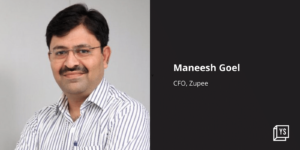India’s 1.4 billion population has the unique advantage of a young workforce; a demographic and competitive edge that can drive economic growth.
Indian policymakers recognise this opportunity. After all, according to estimates by Invest India, a 5-7 percentage point jump can be gained from the appropriate allocation of resources to ensure that young people are healthier, better educated, and financially literate.
It is the same principle that informs India’s historic vaccination programme. On October 21, 2021, the 1 billionth vaccine dose had been administered, a monumental feat of medical and political governance. The world’s “biggest vaccination drive” stirred rating agency Moody’s, which cites the rising vaccination rates as one of the reasons for more resilience in the economy in the next wave of infections. Moody’s verdict is real GDP this fiscal year will surpass that of 2019, rebounding to a growth rate of 9.3 percent before easing to 7.9 percent in fiscal 2022.
Assistive tech and its impact
This is obviously encouraging until you also consider the more than 70 million people in India who remain excluded from the benefits of a rising economy – the disabled.
Technology will play the most critical role in addressing this challenge, says Deepak Bagla, Managing Director and CEO, Invest India. “Investing in technology, particularly assistive tech, both has a transformative impact on people’s wellbeing and makes sound economic sense for funders and governments. It is the right thing and the smart thing to do.”
As the national investment promotion and facilitation agency, Invest India focuses on sector-specific investor targeting and development of new partnerships to enable sustainable investments in India. Its latest intervention is a collaboration with Prosus, Social Alpha, and World Health Organization (WHO) in an assistive tech challenge called Prosus Social Impact Challenge for Accessibility (SICA). Prosus SICA was recognised as ‘CSR Initiative of the Year’ by the AssisTech Foundation.
Prosus has committed Rs 1.65 crore to SICA spread over three years. Each year sees awards to three successful startups. Invest India and Social Alpha provide additional mentoring and financing opportunities, while WHO supports the programme with technical assistance.
People using assistive tech (AT) live more fulfilling lives. The statistics are irrefutable; 76 percent of children who received assistive tech were able to remain in a regular classroom; 67 percent reported that assistive tech enabled them to obtain employment; two billion people will demand assistive tech by the end of the decade. “Yet, it remains that 92 percent of disabled in India still do not have access. The government, in partnership with private players, is driving investments where they’re needed and encouraging entrepreneurship with social impact,” says Deepak.
Chapal Khasnabis, Head (a.i), Access to Assistive Technology and Medical Devices, WHO in Geneva says the market opportunity is big. “When we refer to the market, we must include the needs of the elderly. This means 300 million people in India need access to assistive tech. If we go by the 2 billion-figure and assuming an average requirement of $500 a person, that’s a $1 trillion industry. The question then arises, how much is India’s market share? Not significant at all yet. The industry in India needs to look at assistive tech as commercially viable.”
According to Sehraj Singh, India Managing Director, Prosus, partners such as WHO can help Indian assistive tech startups that have achieved scale to enter the international markets. WHO can put to play its understanding of global markets, and its reach. “That is where we really hope to take the ‘Made in India’ to the world story,” says Singh.
Emerging trends
Khasnabis, a veteran in prosthetics and orthotics with almost three decades’ experience, is optimistic. “The future of assistive tech is bright and inviting. At WHO, I started as a team of one; I now have a team of 12. WHO sees India’s assistive tech sector as a gold mine. What we need is good miners to extract it and sell it at home and abroad for a good price. At present, there is little choice in the global AT market. India needs to step up and offer that choice.”
Investments are already flowing in, says Bagla. “If the idea and the plan are good, we are seeing financing finding its way there. There is a rise in venture capital funds approaching Invest India with an interest in assistive tech. They are approaching the theme not from a CSR lens but through their core investment strategies.”
SICA’s top startups will be announced in December on the occasion of the International Day of Persons with Disabilities. To know more about applications, login to https://www.startupindia.gov.in/










